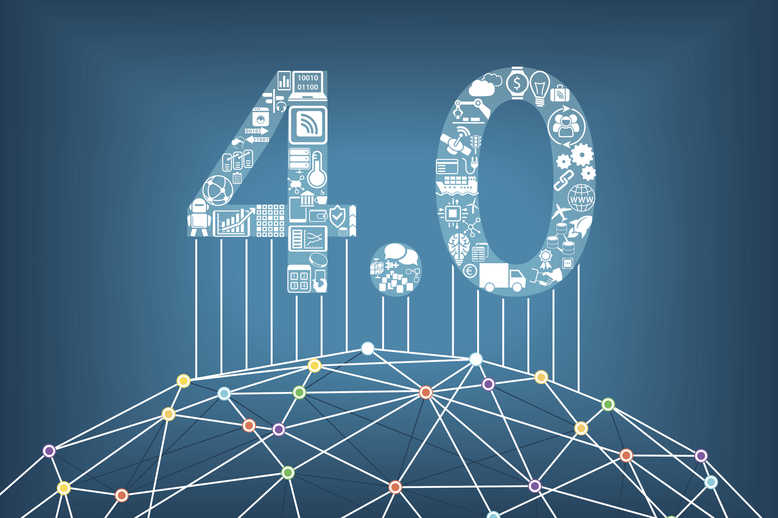Industry 4.0 for Supply Chain – The role of AI (Part 3)

This is part 3 of a 3-part blog, addressing the 3 questions below.
Part 1 – What is Industry 4.0?
Part 2 – Where does Supply Chain figure in Industry 4.0?
Part 3 – What is the role of AI in Supply Chain for Industry 4.0?
You can find Part 1 here.
You can find Part 2 here.
Artificial Intelligence in Industry 4.0, Digital Supply Networks
In the first two parts of this article we covered Industry 4.0 basics and looked at Digital Supply Networks. We understood how automation and the internet of things come together to create a connected world that personifies Industry 4.0. We saw how systems and applications could integrate and coalesce into this massive, constantly evolving and adapting organism called a Digital Supply Network. Automation, connections and integration provide the physical structure of the digital supply network. Artificial Intelligence infuses life into this organism and makes it functional.
AI Steps Up
Digital Supply Networks derive their true benefit by being responsive, adaptive and real time. Without any of these characteristics, they would not be able to differentiate from traditional supply chains. These characteristics require that the supply chain be able to handle whatever is thrown at it, accommodate umpteen scenarios, learn new paths, optimize for cost, utilization and other factors, all of this in near real time and round the clock.
The supply chain needs quick, intelligent, optimal decisions all the time. Artificial Intelligence has come of age and makes this possible. Distilled human intelligence in the form of algorithms, machine learning, neural networks that discern patterns, insights from analytics and statistical routines that use them with “current” information all facilitate real time decision making by systems. Rule and role based human oversight bring in the ability to tap expert intelligence for critical decisions and approvals.

AI takes over tasks that humans perform and provides consistent quality output, in much lesser time. Tremendous improvements in computational power and toolsets have given plenty of teeth to AI. The AI systems in Digital Supply Networks take care of planning and scheduling, allocation of resources, process customization and optimization.
Real world applications
Let us look at some specific applications of AI in supply chain.
- Forecasting of demand based on historical patterns and current factors can be effectively done to in turn aid resource planning, production planning and procurement. Optimal inventory levels can be achieved to ensure SLAs while not locking up capital, based on analytics and forecasts.
- Scheduling of operations in factory and warehouse environments can be done based on the order book. AI can optimize these schedules to improve utilization, reduce costs, evenly distribute work and more.
- Turnaround time for picking and put-away operations in the warehouse can be reduced using intelligent suggestions for locations to store material or pick them from. Machine learning ensures that the system learns and improves continuously.
- Dock and truck scheduling for loading and unloading in busy warehouses can be done by systems that can factor in constraints such as arrival and departure time restrictions, lunch breaks, breathers between trucks, skills and equipment needed for trucks such as forklifts, size of team needed for the order, special needs such as cold docks, extra-long trucks and so forth.
- Loading sequence and pattern for storage bins, trucks to maximize space utilization with bin packing techniques. In case of trucks the loading sequence also can factor sequence of delivery to ensure ease of access.
- Route planning for delivery in case of milk runs, as well as for on demand orders can be created to reduce travel time, reduce fuel costs, optimize number of trucks needed. Information pertaining to traffic, preferred delivery slots can be used in planning while ad hoc orders and express orders can be dynamically factored in to re-plan with minimal disruption.
- Goods to picker solutions with automated robots require intelligent traffic management within the warehouse to reduce power costs, time needed and avoid log jams, while efficiently scaling up to meet demand.
Artificial Intelligence’s true power comes to the fore when it goes beyond automation of mundane human decisions, to working with factors that do not model easily, learning from data, dealing with numerous complex factors, large scale, quick turn-around needs.
As we saw from the potential applications listed above the intelligence is distributed across sub-systems. The federation of these intelligent subsystems creates a powerful collective intelligence where each subsystem provides stimuli/inputs to other subsystems.
This brings us to a conclusion of the 3 part-article. Embracing Industry 4.0 entails big changes to processes, organization ethos, skillsets and infrastructure. It opens up revolutionary possibilities and readies organizations for a new age economy. Take steps today to stay ahead of the curve and participate in creating and shaping the new age economy. Coming soon! How to get started with your Industry 4.0 journey.
